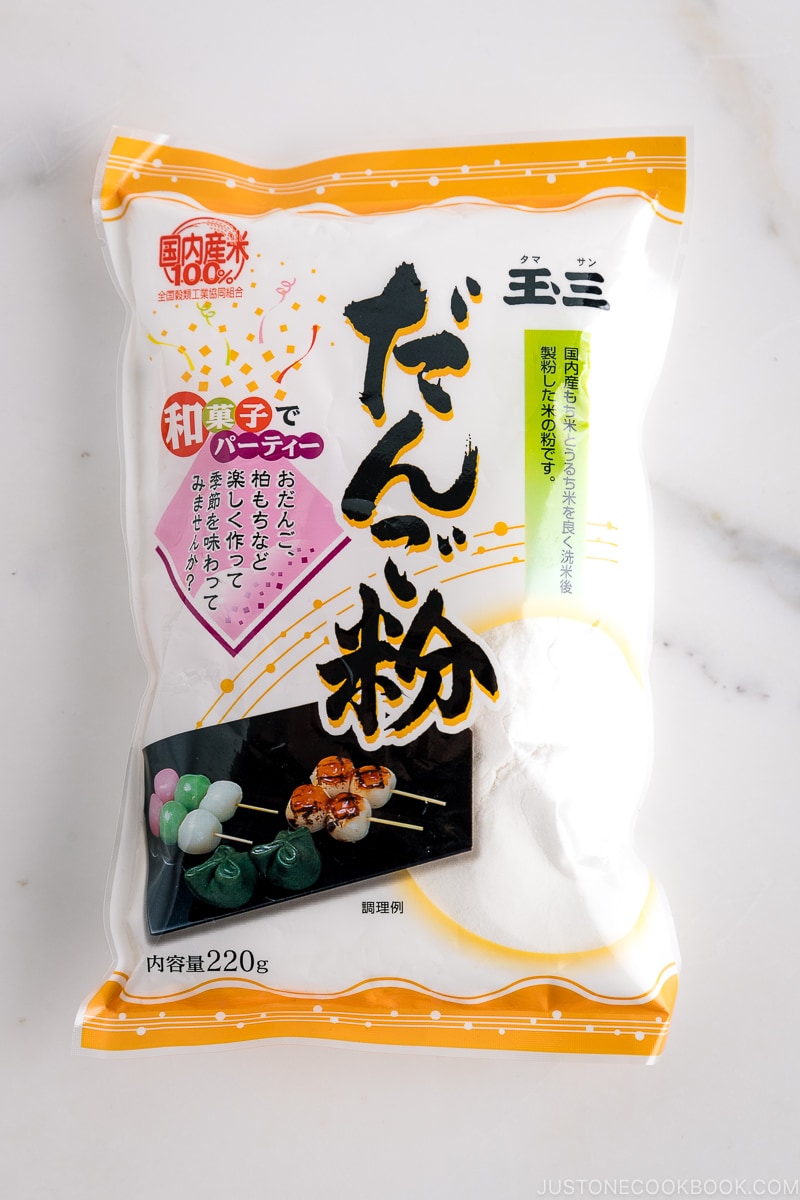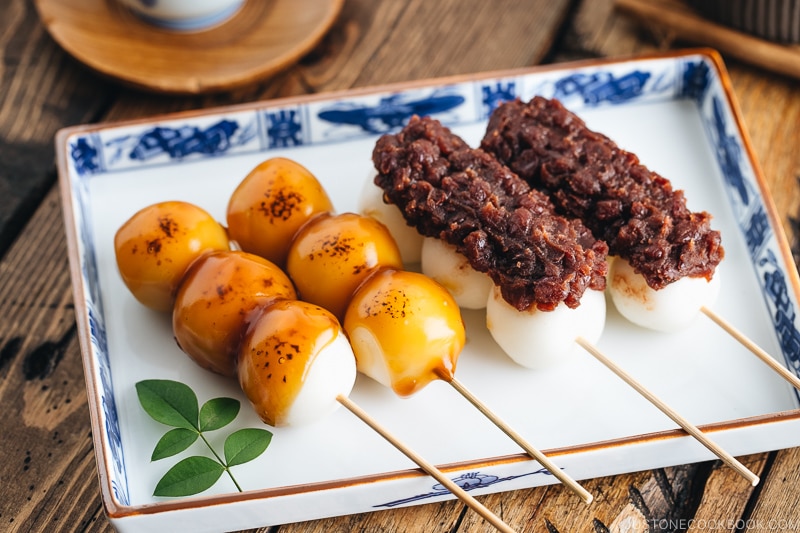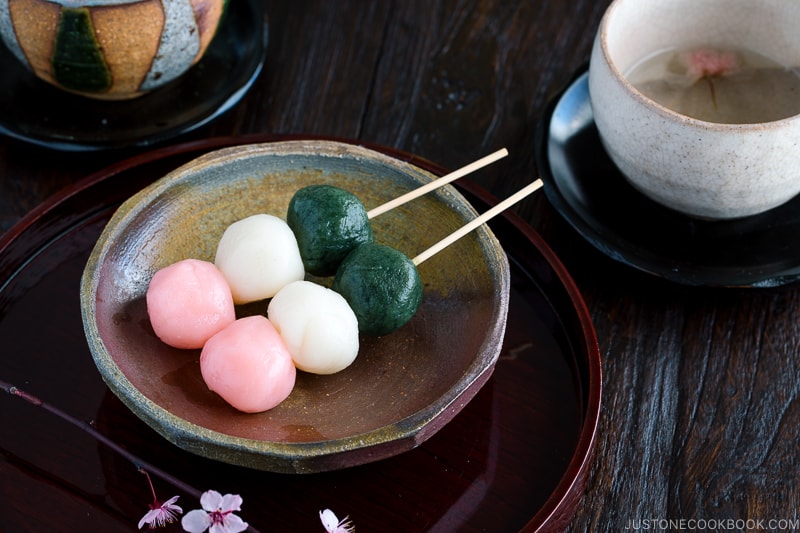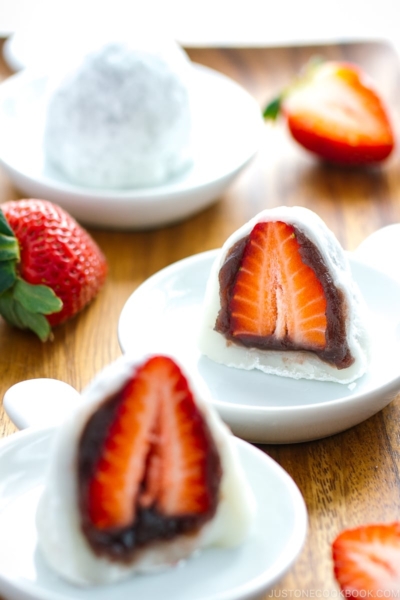Dangoko (“dango powder”) is a blend of powdered uruchimai and mochi rice to make dango skewered mochi balls.

Dangoko (団子粉, だんご粉) is a rice powder blend of uruchimai (粳米, Japanese short-grain rice for eating) and glutinous rice that’s made by soaking, pulverizing, and drying the grains.
What Is Dangoko
Dangoko is rice flour for dango, skewered mochi balls. The rice flour ratio is up to the manufacturing brand; some add starch powder for texture and firmness.
It is primarily used to make dango, chewy sweet rice dumplings, on bamboo skewers. Typically, three to five dumplings (traditionally five) on a skewer and covered with a sweet soy glaze, topped with sweet red bean paste, or other sweet toppings. It’s a popular offering at festivals but you will also see it sold at supermarkets and convenience stores.
Dango are a Japanese dessert eaten year round. Hanami Dango (“flower viewing dango”), also known as Sanshoku Dango (“three color dango) are tri-colored dango eaten during the cherry blossom season. The green color is from yomogi or matcha powder and the pink is red food coloring or natural dyes like strawberry powder.
What Does It Taste
It has a mild rice flavor.

How To Use
Make dango by adding water to the flour, molding the dough into bite-sized balls, and boiling them in hot water. Transfer the balls with a slotted spoon into a bowl of cold water to cool.

Dango Recipes

Where To Buy
Find it at Japanese and Asian grocery stores.
Substitutions
You can blend your ratio of rice flour, as shown in this recipe. You can also use shiratamako. Shiratamako is 100% glutinous rice/mochi rice with finer grains and a smoother and bouncy texture. It also won’t harden when stored in the refrigerator.
Although mochiko is a similar rice flour, it’s produced differently. It yields a very soft and tender texture, which is not suitable for dango. However, we’ve had readers who achieved good results by adding a spoonful of cornstarch or potato starch to mochiko.
I do not recommend using glutinous rice flour from other Asian countries as the texture will differ.
Wish to learn more about Japanese cooking? Sign up for our free newsletter to receive cooking tips & recipe updates! And stay in touch with me on Facebook, Pinterest, YouTube, and Instagram.







